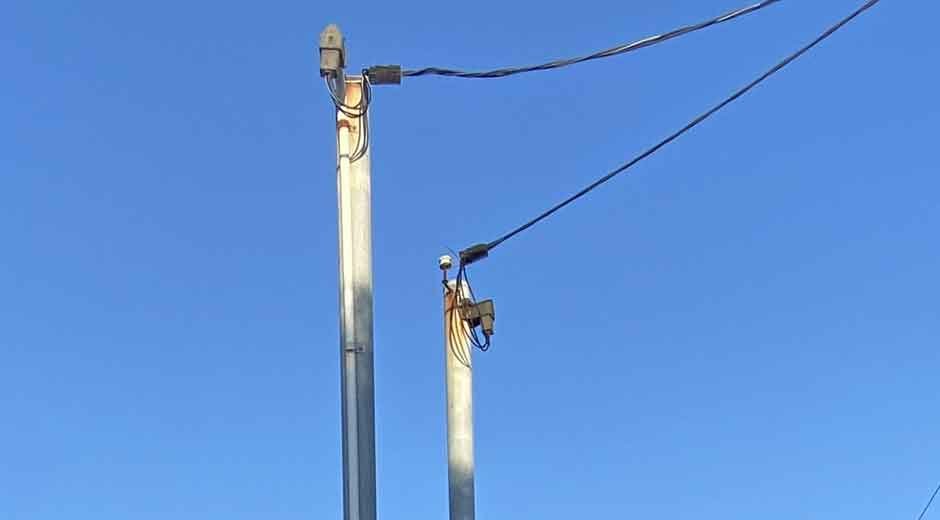Skip to the good bit
ToggleQualified contractors install utility poles in a way that supports long-term performance and electrical safety. Before installation, specialists assess the site to confirm it’s suitable for proper pole placement. Here are some factors involved in utility pole installation for power distribution:
Installation Site
Placing utility poles in the right location ensures power reaches homes and businesses safely and without interruption. Contractors inspect the site to confirm safe clearance from buildings, fences, and other nearby structures. The area must also be free of trees and vegetation that could interfere with the lines or create hazards over time.
Before installation begins, crews check for underground cables, pipes, or other utilities to prevent accidental damage. They assess the soil to confirm it can support the pole’s weight and evaluate how easily equipment can access the site. These careful steps help ensure the pole stays secure and performs reliably throughout its service life.
Pole Material
An experienced utility construction company helps determine which material best suits your project, taking into account the environment, load requirements, and long-term maintenance expectations.
- Steel: Galvanized and weathering steel poles support heavier equipment and multi‑circuit loads. When coated with corrosion‑resistant finishes, steel poles withstand rain, humidity, and varying weather conditions. Their relatively lighter weight makes them easier to transport and install without sacrificing durability.
- Concrete: Known for strength and longevity, concrete utility poles perform well in areas exposed to high winds, wildfire risk, or vandalism. Non‑combustible and resilient under harsh conditions, they offer structural reliability for both transmission and distribution systems.
- Hybrid: Combining steel and concrete, hybrid poles offer added strength and durability for demanding environments. They offer a balance of performance characteristics that are well-suited to complex project requirements.
Selecting the proper material for utility poles helps ensure performance, reduce future repairs, and support long‑term reliability across the network.
Height and Depth
Utility poles are designed to specific heights based on their intended use, allowing for proper spacing of multiple lines and optimal system performance. The right height ensures safe clearance from the ground, buildings, and vehicles. Higher-voltage electrical systems require increased clearance to maintain safety and prevent accidental contact or electrical hazards.
The depth a pole is buried depends on soil conditions; loose or soft soils call for deeper installation to ensure stability and long-term structural support. Heavier equipment and wires also require poles to be set deeper to carry the added load effectively. In areas prone to strong winds, a deeper setting prevents poles from leaning, tipping, or uprooting over time, helping maintain system reliability and safety.
Safety Rules
Utility pole installation adheres to strict safety guidelines to prevent electrical shocks, fires, and power outages in homes and businesses. Specialists install poles away from water, gas, and communication lines to ensure the proper functioning of the system and safe maintenance. Poles are grounded to discharge excess electrical energy from lightning strikes or equipment failures.
Poles feature identification tags and markings to assist experts during inspections and repairs. In some areas, reflective strips enhance visibility for drivers and workers in poor weather conditions. Professionals use products designed to handle the weight and tension of all equipment and lines attached to the poles.
Pole Spacing
Installing poles at proper intervals prevents wires from hanging too low over roads and walkways, thereby ensuring safety for pedestrians and vehicles. Poles placed too close together increase the total number needed, which drives up costs and complicates maintenance. Correct spacing also helps manage wire tension, reducing the risk of snapping during hot weather conditions.
When wires are heavy, they are installed closer together to provide better support and prevent poles from leaning or bending. In some areas that are prone to strong winds, snow, or ice, poles are spaced tighter to reduce strain on both wires and poles. On hillsides, poles are positioned closer to prevent wires from drooping too low and interfering with clearance.
Invest in Quality Utility Poles
During installation, experts position utility poles carefully to ensure they last longer and transmit power efficiently without interruption. These professionals also help you select materials best suited to the specific weather and environmental conditions in your area. To invest wisely in high-quality utility poles that deliver consistent performance, contact a qualified company today.







